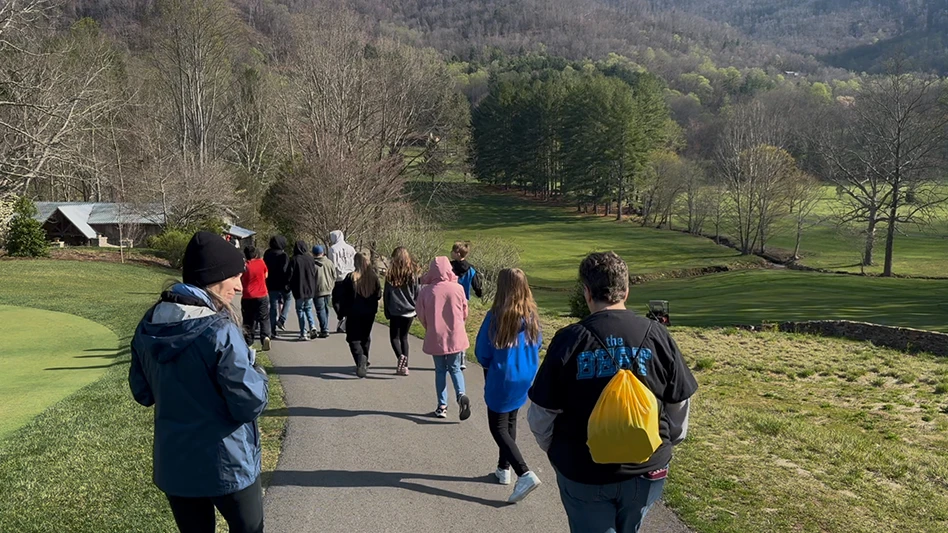Golf course owners sometimes hire management companies to help them improve their facilities. When a management company takes over an operation, it analyzes the expense and revenue sides of the business. Reallocating where money is spent typically improves operations, according to management company executives.
|
|
Many components need to be looked at when taking over the operations of golf facilities, says Peter Hill, chief executive officer and chairman of Vienna, Va.-based Billy Casper Golf Management.
“We evaluate the staff, the condition of the golf course, pricing, amenities, and these elements translate to the value the facility has,” he says. “Is the course properly positioned? What are its strengths and weaknesses, its competition, location, quality of conditioning? All this helps determine the price.
“The key to success in golf is realizing that all golf is local,” Hill adds. “Most people golf at daily-fee courses and come from a half hour away or less.”
The formula for turning around facilities is the same, according to John Easterbrook, executive vice president of operations for Scottsdale, Ariz.-based Troon Golf.
|
|
“With a daily-fee course, it’s easy to move the needle and measure how far the needle moves,” Easterbrook adds. “With private clubs, it’s not as easy. At times, it feels like you’re adding up pennies.”
“With private clubs, you have a smaller audience,” Skinner says. “We survey the members and get to know them and find out what their expectations are. We also get involved in the community to increase membership. Sometimes we look to rebrand the club.”
The challenge with private clubs is that there’s tremendous emotion involved, according to Easterbrook.
|
|
Problems are unique to each course, and usually the team in place isn’t supported or doesn’t have the tools to do a better job, Easterbrook says of courses that need help.
“When we take over management of a facility, it’s a full-court press,” he says. “We look at all aspects of a club or course, on the expense and revenue sides. We have a competitive matrix to measure club performance.”
Skinner says KemperSports tries to align itself with owners’ interests.
“It’s not easy anywhere we go,” he says. “We try to be honest with the owner as to how things need to improve. Customer service and course conditions are the two biggest determining factors.
“You have to look at the revenue and mix of play and where it’s coming from,” he adds. “We don’t believe in discount golf. We look at value.”
Even with all of the different facilities that exist, Skinner says if there’s one common denominator among struggling courses – it’s that they don’t know their niche and aren’t targeting their market.
|
|
Staffing
A main component of a golf operation is staffing. How staff members are set up to interact with people, how they’re trained, how they greet people and how they’re treated are aspects BCG analyzes, Hill says.
“It’s not a hard concept to understand, but it’s difficult carrying these out,” he says.
Hill says there’s not much superintendent turnover when the company takes over an operation.
“Most superintendents are passionate and competent guys who are either real good grass growers, good course presenters, have good business sense or are good project managers,” he says. “The ideal guy has all four of these traits, but most have two or three. Part of being a good manager is recognizing the weak link and supporting that.”
At many courses, superintendents don’t have a budget or a sense of what they’re spending and don’t get much direction from the owner, and there’s no long-term plan, according to Hill.
|
Succes stories |
|
Management companies have used their expertise to improve many golf facilities. The following are a few recent examples from KemperSports and Billy Casper Golf. Cypress Head, a property in Port Orange, Fla., is a municipally owned facility that was struggling, according to Steve Skinner, president of KemperSports. The company took over the facility in late 2003 and helped increase rounds 11 percent and revenue 15 percent in two years, Skinner says. “Course conditions improved because we set new agronomic standards, brought in a new superintendent and had higher expectations,” he says. “We had to bring in a new superintendent because the previous one left. We gave more value to golf, spent more time in the community, and worked hard at driving rounds in the off-peak and shoulder seasons.” Another facility in Florida, Ravines Golf & Country Club in Middleburg, wasn’t performing well either. The Japanese owner who built it wanted to sell it but couldn’t because the course was losing money. “The market had seen many new, high-end resorts come in, so we repositioned the golf course and changed the pricing strategy,” Skinner says. “They were trying to charge the same fee all year round, but you can’t do that in Florida. When we left, the course was making $400,000 and the owner was able to sell it.” Indian Spring Country Club in Marlton, N.J., is a daily-fee facility with annual membership. The owner was having a difficult time meeting a debt service requirement because he wasn’t generating enough money, according to Peter Hill, chief executive officer and chairman of Billy Casper Golf. Within nine months of the company taking over the operation, the facility had a six-figure change in gross revenues and net income, Hill says. “It was about getting more productivity out of the money spent,” he says. “We went out and generated more business and improved the product. The price didn’t change. “We were paying more attention to the golfers and advertised,” he adds. “We changed the volume of play and the course condition, but it’s like steering a big ship – improvements take time.” GCN |
When KemperSports first takes over a property, it interviews all the staff.
“We’re looking at the right staff in the golf shop and food-and-beverage outlet and ask if they’re service oriented,” Skinner says. “Those with the right attitude and skills stay. We set standards and expectations and give the staff the tools to do a good job and make a difference.
“On the expense side, we look at staffing to see if there are any savings, but most of the turnaround is done on the revenue side, which will drive play,” he adds.
Easterbrook says a golf operation needs a support mechanism, and many times the company finds out that a system isn’t supported.
“We don’t move staff out unless the people who hire us tell us to,” he says. “We look at the staff levels and where the superintendent is spending money. Most of the time, we don’t ask for more money, and we’re not blowing out a superintendent. We’re just looking over the shoulder of the superintendent.
“There are times when a course or club isn’t managed well,” he adds. “We bring a culture and enthusiasm for what we’re doing. The quickest way to get let go is to not have enthusiasm for what you’re doing. Whether you’re operating a $30-a-round golf course or a $300-a-round golf course, people in charge need to be enthusiastic.”
Reallocation
More often than not, turning around a facility isn’t about the superintendent not having enough money, according to Skinner. More often, it’s spending money more wisely, i.e., staffing, the right chemical applications, detail work, priorities on the course – doing the right things golfers notice.
Easterbrook says turning around a golf course doesn’t always mean cost cutting. It’s more of a reallocation of expenditures.
“We have the ability to share staff among clubs, so they aren’t keeping people in nonbusy times,” he says. “We can keep people in our system of 8,000 employees. And with our procurement method, a club can save 20 to 30 percent on purchases.”
A common problem among the courses BCG takes over is the misallocation of funds in which not enough money is set aside for capital improvements, Hill says.
“There should be two separate budgets: an operations budget and a capital budget,” he says. “Maybe there’s too much labor and not enough material and supplies or vice versa. What’s the three- to five-year plan to address the course, and what can the staff bite off and chew in 2006, 2007 and beyond?”
Portfolio growth
Even though management companies try to improve operations, they haven’t always been viewed positively. However, the acceptance of management companies is much better now than 10 years ago, Easterbrook says.
Even so, management companies try to add to their portfolios. Troon, which doesn’t have any municipal or lower-end golf facilitates in its portfolio, is in the process of completing a deal under a different umbrella in about four months, Easterbrook says.
“If a course isn’t a leader in the market, we would decline to manage it,” he says.
BCG has a 90/10 mix of daily-fee and private facilities. Hill says the company wouldn’t add a course to its portfolio if the owner had unrealistic expectations.
“It’s all about expectations,” he says. “At the end of a $40 round, golfers will have three reactions: ‘That was a great deal,’ ‘It was $40 well spent,’ or ‘I’m never going back.’ You need to avoid the last reaction.” GCN

Explore the January 2006 Issue
Check out more from this issue and find your next story to read.
Latest from Golf Course Industry
- The Aquatrols Company hires marketing manager
- Renovating Bredemus in West Texas
- Renovation starts at Okatie Creek GC at Sun City Hilton Head
- The Fittest Podcast in Turf: Episode 1
- New 6-hole course debuts in Oklahoma
- GCSAA announces Grassroots Ambassador Leadership Award recipients
- Reel Turf Techs: David Gummo
- PBI-Gordon promotes two to executive level










